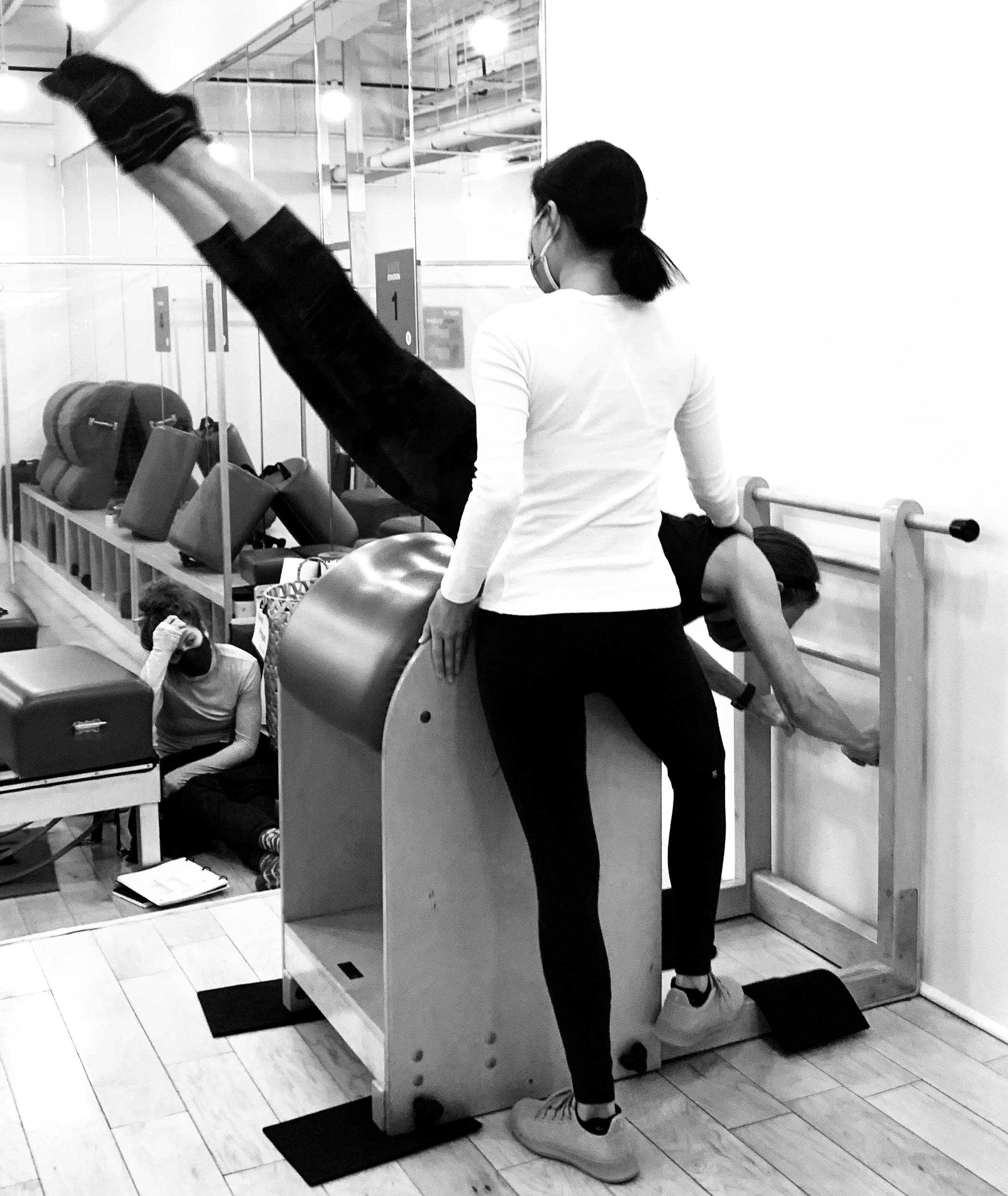Will the Real Pilates Stance Please Stand Up?
How Should Pilates Teachers Stand?
A narrow “V”.
A tripod with the feet.
Heels together, toes apart.
If you have taken or taught or even seen Pilates this position has likely been a mainstay of myriad positions and moves. Known as “Pilates Stance” or “Pilates position”, it pops in and out of exercises depending on a teacher’s assessment, desired outcome and cueing.
The less obvious Pilates stance or position is the one the teacher assumes. And I’d posit it’s far more essential to one-on-one training than any letter shape made by someone’s feet.
When we built our teacher training program it was with the underlying principle that this is a “teaching” program not a “performing” program. How to teach, lead, educate and guide is the foundation of any serious program. For me, that began at the very, very beginning and with a simple question:
““How Should a Teacher Stand?””
Without proper positioning a teacher can not provide critical safety for a client. Without proper stance, an instructor can not use gravity and physics to provide assistance or resistance to a student. Without effective placement, a teacher will not even be able to protect themselves from sprain, strain or injury. I am not being dramatic when I say poor stance is the greatest risk to a teacher’s livelihood in a very literal sense.
Drawing on my training as a physical therapist and what is required for safe patient care and effective provider care, we train teachers to apply three distinct rules for how to stand and deliver as a professional Pilates instructor.
FIRST - Apply a wide base of support. When spotting or assisting, your feet should be spaced at least hip width apart, preferably a bit wider. A narrow base makes you more likely to get pushed or pulled off balance. A wide stance makes you sturdy and stable.
SECOND - Use an offset stance. This means one foot is in front of the other. Or placed up on a surface or edge. Imagine you have one foot on the Reformer. Or one foot on the pedal. Or one foot on the brace of the Cadillac. Those are all offset stance. This stance allows for maximum weight shift meaning you can respond quickly to your clients’ movements and also leverage your weight back and forth with ease.
THIRD - Whenever possible position yourself on the diagonal to the client. Whether that’s a bit front and diagonal (Anterolateral) or a bit behind and diagonal (Posterolateral). This diagonal positioning means you can catch and control clients no matter which way they move. It allows for you to be able to use your arms freely to span around them and block them or use your side body to cue necessary adjustments.
This stance checks all our boxes for applying cues with ease, establishing safety and implementing good body mechanics to preserve your own health and longevity as a teacher.
So the next time you cue your client to use Pilates stance - check your own.
How have you used good body mechanics to keep your body healthy as an Instructor? Share Your Thoughts! Click on the Blog Title at the Top and a Comment Box Will Magically Appear!

